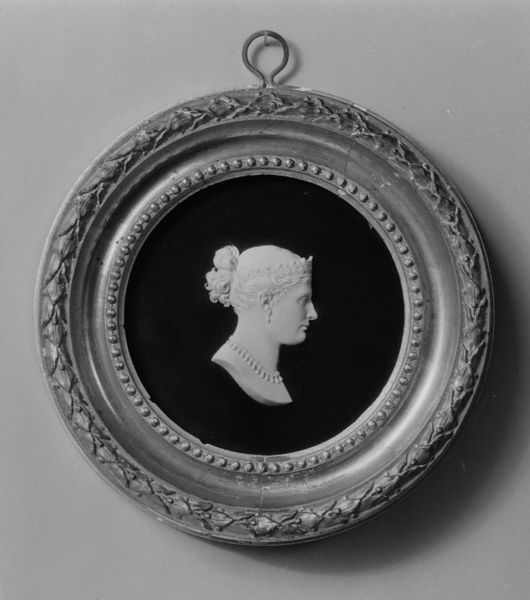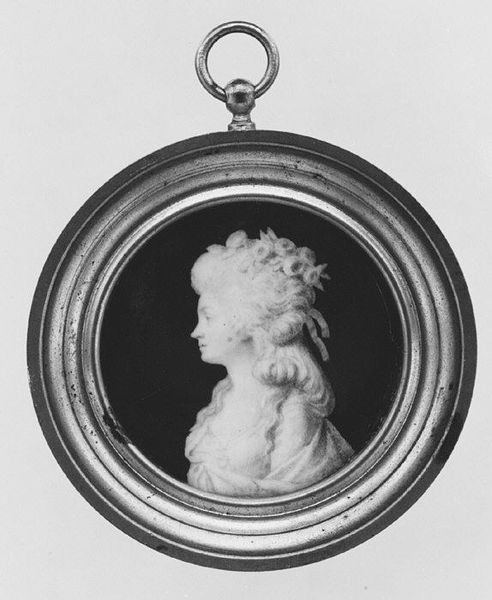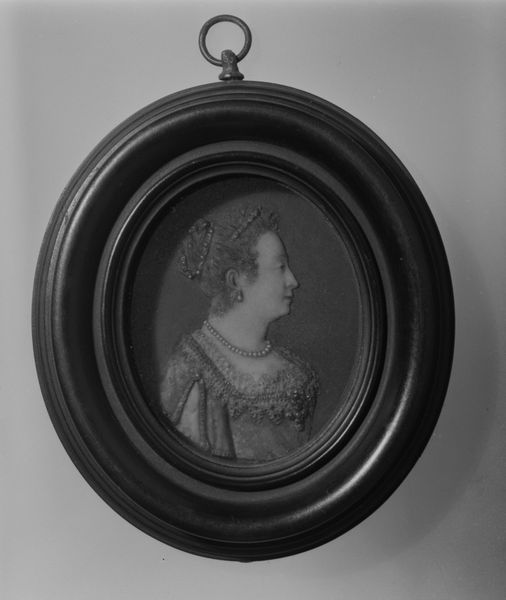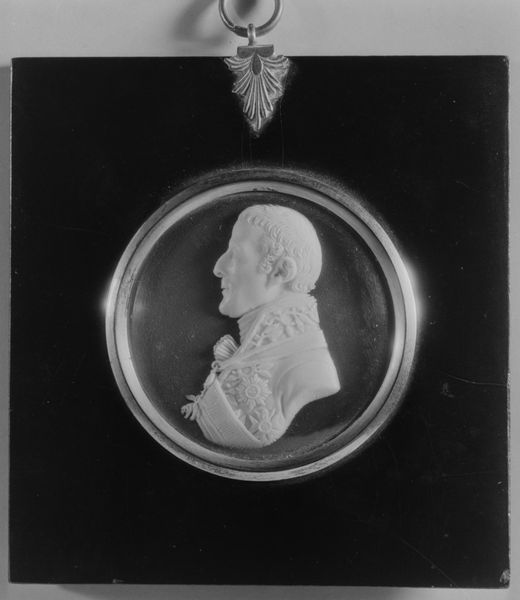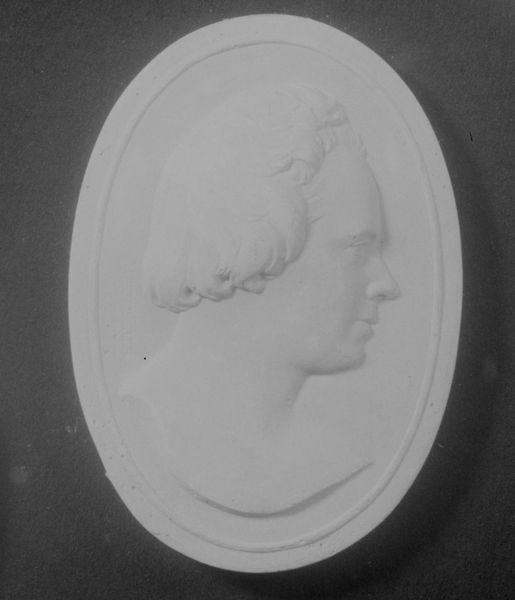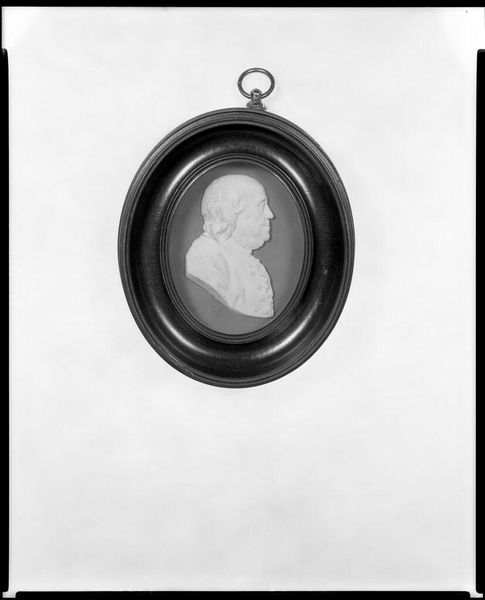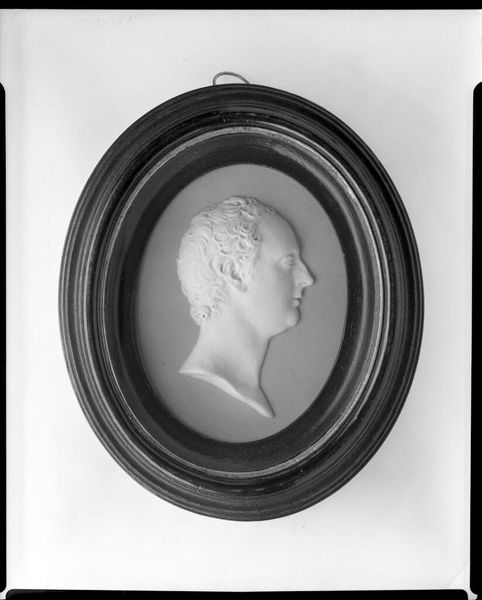
Felix Baciocchi, Prince of Lucca and Piombino 1804 - 1814
0:00
0:00
sculpture
#
portrait
#
neoclacissism
#
sculpture
#
sculptural image
#
black and white theme
#
sculpture
#
men
#
decorative-art
#
profile
Dimensions: Diameter: 4 1/4 in. (10.8 cm)
Copyright: Public Domain
Curator: Let’s turn our attention to this delicately rendered portrait: "Felix Baciocchi, Prince of Lucca and Piombino," crafted by Giovanni Antonio Santarelli sometime between 1804 and 1814. Editor: Intimate, isn't it? Like a cameo glimpsed from a love letter. The stark white profile against that void… it’s quietly dramatic. The craftsmanship is wonderful. Curator: Indeed. Santarelli worked during a period captivated by Neoclassicism. This style looked back to ancient Greece and Rome for inspiration. Notice the profile view. The simple elegance echoes classical portraiture. Editor: It's almost severe in its simplicity. But look at the details. The way the light catches the curl of his hair. He’s both powerful and… well, a little vulnerable, no? A complex figure contained in this small frame. I imagine it being something to be treasured. Curator: He certainly was. Baciocchi became Prince of Lucca through his marriage to Elisa Bonaparte, Napoleon’s sister. Editor: Ah, the Napoleon connection! That explains the imperial vibe I was getting. So this wasn't just decorative. It’s a potent statement. Propaganda even? To elevate this man. And that explains why he might not look very happy too. Burden of command and all that. Curator: That’s astute. These miniature portraits often functioned as symbols of status and power. Think of them as the Instagram of their time, used to disseminate controlled likenesses. Editor: Instagram, but requiring actual talent and not just a good filter! It makes me think, what story did the artist want to tell? Or was forced to tell? I’m suddenly even more drawn in now, knowing that power sits behind that delicate surface. Curator: Context adds such a rich layer, doesn't it? Santarelli's artistry meets historical imperative, crafting a statement about Baciocchi's place in the Napoleonic era. Editor: Right, like a quiet explosion contained in that little circle. Art always holds more than what immediately meets the eye. Curator: An excellent point, leaving us to ponder the layered meanings within this seemingly simple profile.
Comments
No comments
Be the first to comment and join the conversation on the ultimate creative platform.
